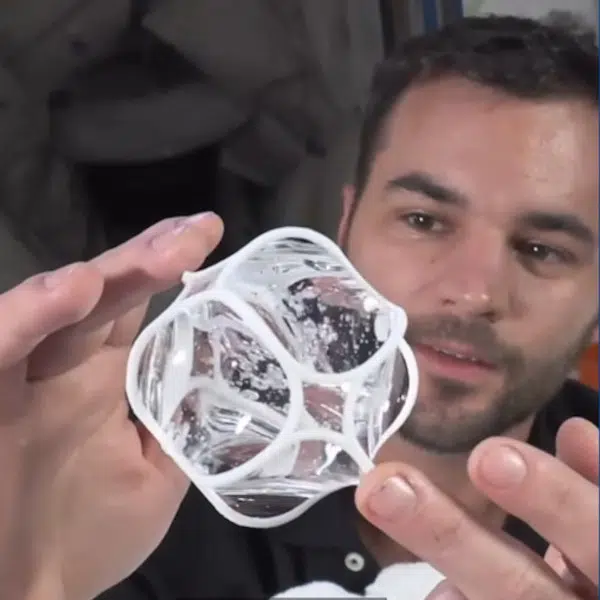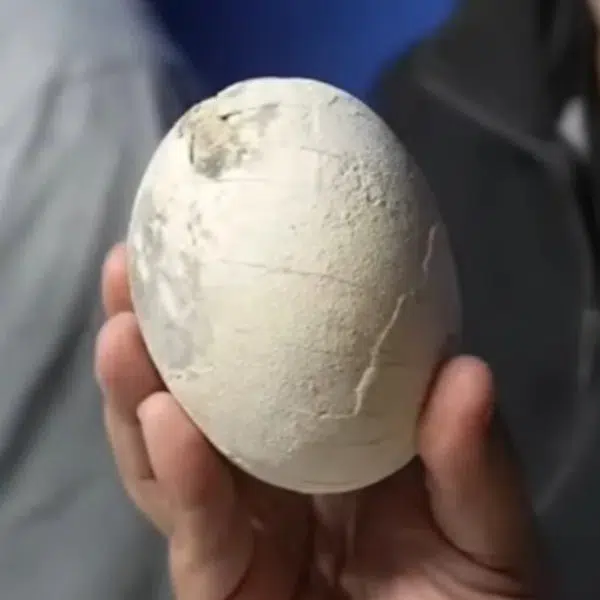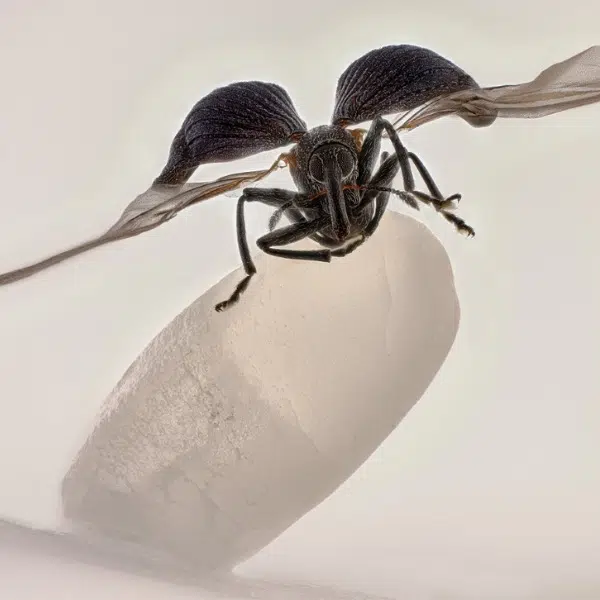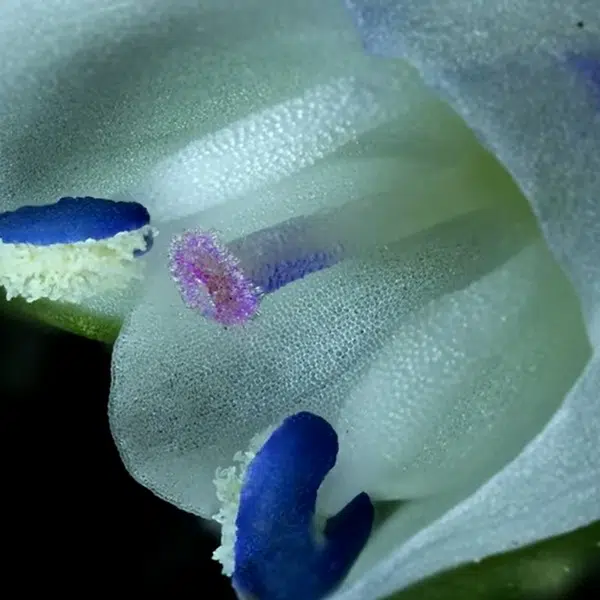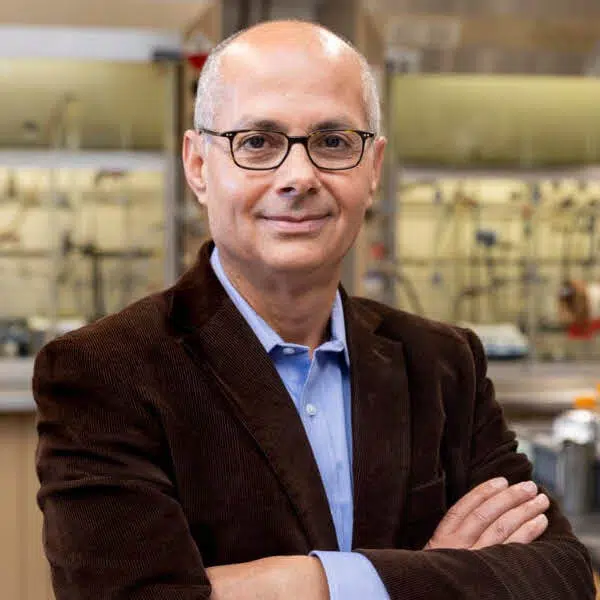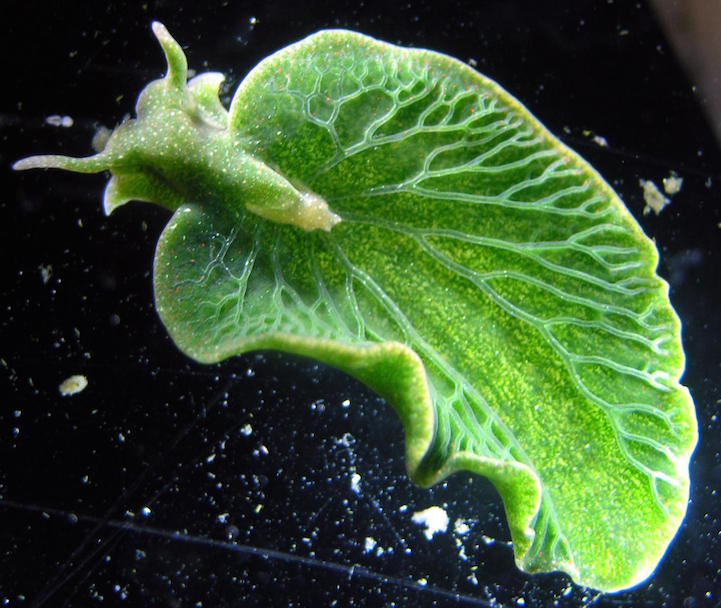
This green sea slug has a lot more in common with the green leaves that it resembles than one might think. That’s because this little guy has hijacked enough plant genes to become the first animal who is able to produce chlorophyll just like a plant, meaning it can rely on sunshine for its nutrition. Elysia chlorotica, as it is known in the scientific community, has previously been recognized as a creature that's able to photosynthesize by acquiring plant organelles from the algae it eats, but a recent study reveals that the brilliant sea slug is actually incorporating some of the genes from the algae into its own DNA.
Since the 1970s researchers knew that the sea slug was able to acquire chloroplasts from the algae Vaucheria litorea (chloroplasts being the organelles in plants that contain the green pigment chlorophyll that converts light to energy). It was seen that the slugs embed these organelles into their digestive cells and maintain them, being nourished through photosynthesis in the process. However, up until now, no one exactly knew how the animals were able to upkeep the pilfered chloroplasts for long periods. That was until this study revealed that the sea slug’s chromosomes actually contain genes that code for chloroplast proteins, acquired from the algae.
So while each new generation must steal new chloroplasts from the algae, the genes necessary to repair the chloroplasts and keep them running and photosynthesizing are already present within the slug's genome. That makes this little emerald animal the only known example of functional gene transfer from one multi-cellular species to another, and an amazing example of rapid evolution in the natural world.
Above photo credit: Patrick Krug

Photo credit: Karen N. Pelletreau et al

Photo credit: Nicholas E. Curtis and Ray Martinez
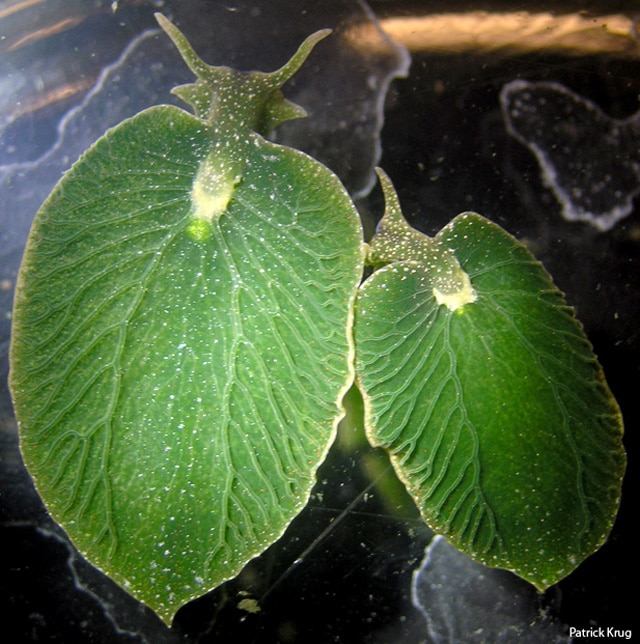
Photo credit: Patrick Krug
via [Reddit, IFLScience]











































































